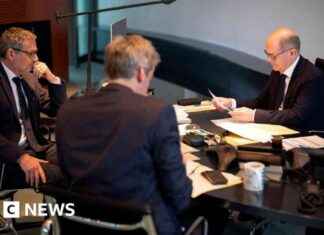Merseburg (dpa/sa) – A fragment of the Merseburg cathedral treasure has returned. A so-called cliff – a former means of payment – was handed over to the United Cathedral Donors of Merseburg and Naumburg at the cathedral on Thursday. The coin was made around 1547 from melted metal from the cathedral treasury. The coin was purchased at an auction in Osnabrück for 5,250 euros and is to be exhibited in future together with the remains of the Merseburg cathedral treasury in the Merseburg southern enclosure. Exhibits include works of art and historical writings.
“With this, Merseburg Cathedral is getting an object for its collections that can impressively report on the fate of the cathedral treasures in the age of the Reformation,” said Markus Cottin, Head of the Cathedral Chapter Archives at Merseburg Cathedral. Together with the preserved remains of the Merseburg cathedral treasure, the cliff will be on permanent display from now on.
According to the foundation, most of the Merseburg cathedral treasure is irretrievably lost. The background to this is the reformation disputes between the Catholic and the Protestant imperial princes in 1546/47. The Merseburg cathedral chapter, headed by a Protestant bishop, saw the threat of war at that time as jeopardizing the cathedral treasury. So he was sent to Leipzig, to be taken into the care of the patron prince.
However, the troops in the city had to be paid during a siege, and open mutinies broke out. The patron prince then had the Merseburg cathedral treasure melted down and turned into coins. The so-called cliffs emerged. The original embossing stamp is still preserved today. Most of the parts of the cathedral treasury that remained in Merseburg were looted in the course of the conflict.
According to tradition, the Merseburg Cathedral of St. John and St. Laurentius was consecrated after only six years of construction on October 1, 1021 in the presence of Emperor Heinrich II and his wife Kunigunde. According to the cathedral founder, one of the most famous chroniclers of the Middle Ages, Bishop Thietmar von Merseburg, laid the foundation stone for the construction of the church on May 18, 1015. For many hundreds of years, the cathedral was the central bishopric of the diocese of Merseburg.







